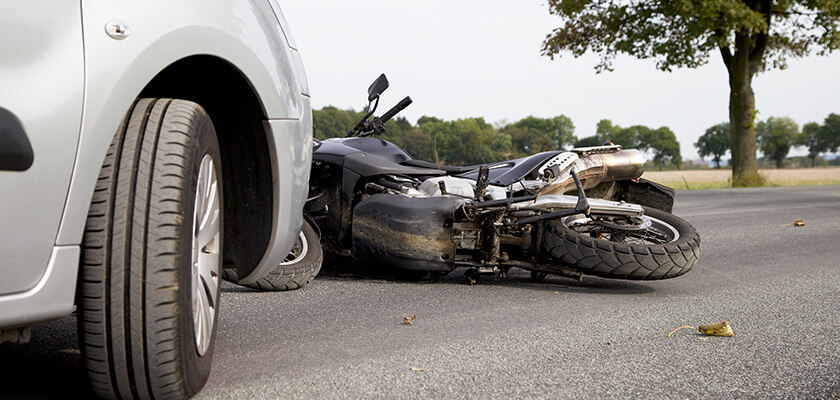Safe might be the last word you think of when you hear “motorcycle crash.” Yet people who have been in these accidents understand – it is possible to minimize the dangers of the crash. Sometimes, trying to control a crash is safer than trying to prevent an inevitable one. In 2017, 5,172 motorcyclists lost their lives in traffic accidents in the U.S. Knowing what to do in the few seconds of reaction time in an accident could save your life.

It is most motorcyclists’ instincts to swerve out of the way of danger. Yet in some situations, jerking the handlebars or cranking the brake could cause a more serious accident than learning how to crash safely. Crashing safely promotes staying on the bike and minimizing your injuries. Avoiding a crash, on the other hand, could lead to a head-on collision or smashing into a guardrail. If you are already too close to the vehicle or object to avoid a collision, try to crash safely instead of swerving.
How you brake can make a big difference in how your motorcycle crashes. Instead of having a knee-jerk reaction and applying too much pressure, apply your brakes deliberately. Lead with your front brakes, as they are the most powerful. Apply progressive pressure rather than slamming on the front brakes all at once. This can help you prevent your brakes from locking up. Then, use your rear brake to balance your weight distribution.
No one wants to crash – but if you know a collision is inevitable, look ahead and decide what to collide with. In the few seconds you have of reaction time, choose where to crash. You never want to ride into oncoming lanes of traffic, even if they seem to be clear at the moment. You also do not want to collide with a vehicle head-on. Maneuver your motorcycle so the side will strike the object instead.
The best way to crash a motorcycle safely is by staying on the bike as long as possible. Many riders mistakenly think bailing will be safer. Bailing, however, could lead to serious impact injuries such as broken bones and a traumatic brain injury. You should also avoid laying your bike down on its side, as this could cause crush injuries or road rash. Hold on and try to aim the collision so your motorcycle – not your body – takes most of the impact. If your motorcycle does start to slide, let go and enter into a controlled tuck and roll, if you can.
Prevention is key in protecting your body during a motorcycle accident. Always ride prepared for a collision. Wear a helmet, boots, long pants, a motorcycle jacket, eyewear and other safety gear. During a collision, do your best to protect your body by keeping it loose. It will be difficult to relax during a crash, but doing so could help you avoid muscle tears and broken bones.
Tucking and rolling is appropriate if a collision is unavoidable and you are still on your motorcycle. Tuck your body by curving your head down toward your chest, pulling your knees in and crossing your arms. Do your best to relax in this position while you crash. Go into a controlled roll if you come off your motorcycle near the ground. Put your arms overhead and keep your legs straight as you roll to a stop.
Once you come to a stop, wait a few seconds before standing up. The adrenaline of the crash could be masking a serious injury, such as pain in your back. If you are safe to remain where you are until paramedics arrive, limit your movement and wait. If you have to get up and relocate, do so as quickly and safely as possible. Check for oncoming vehicles before walking into the road. Call 911 and report the accident right away. Then, see a doctor to check for any injuries and contact a Denver motorcycle accident attorney.